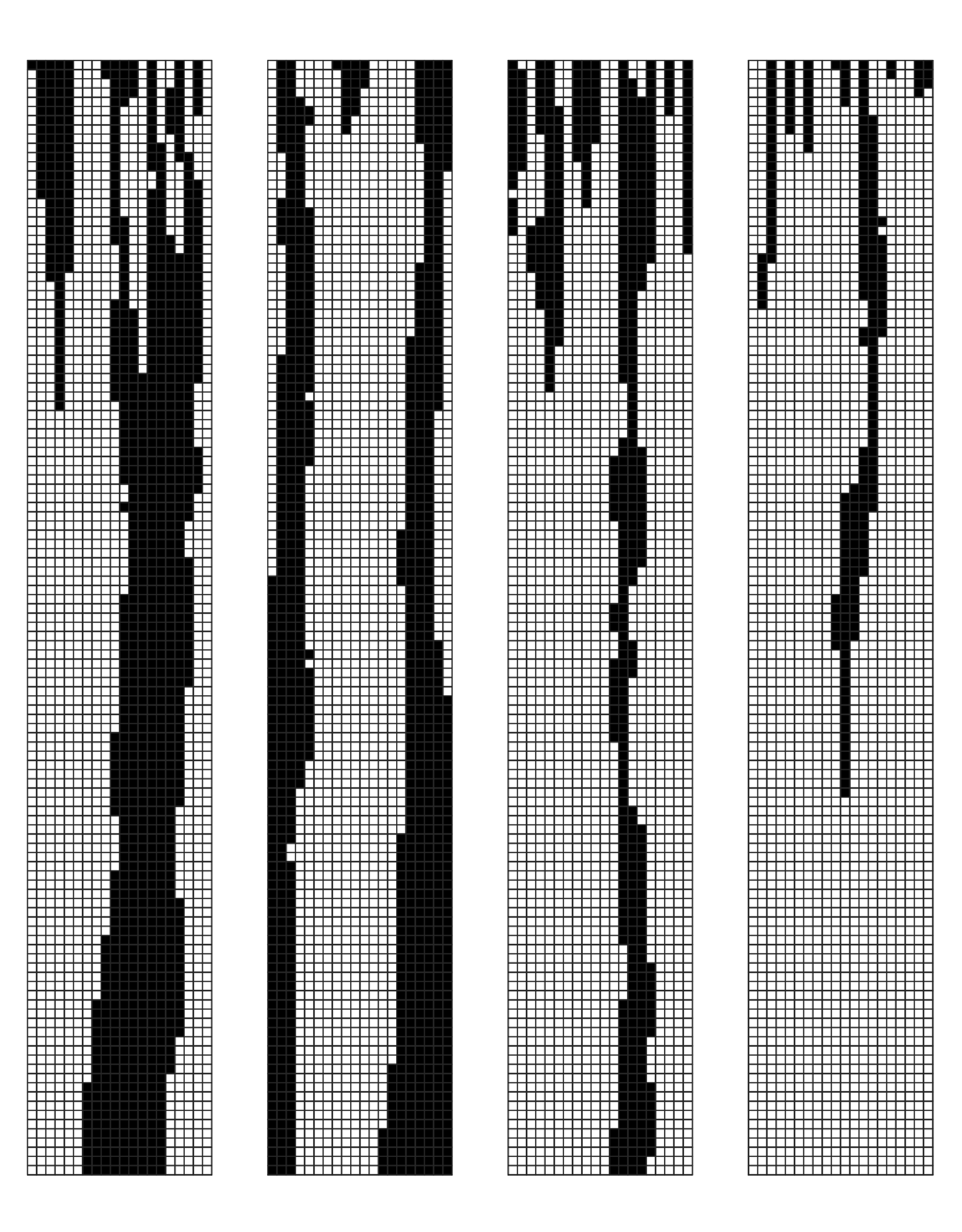curve, the procedure will already typically not work; it will usually get stuck in one of the local minima and never reach a global minimum.
And for discrete systems involving, say, just black and white squares, it turns out to be almost inevitable that the curves which arise have the kind of jagged form shown in the third picture at the bottom of the facing page. So this has the consequence that a simple iterative procedure that always tries to go downhill will almost invariably get stuck.
How can one avoid this? One general strategy is to add randomness, so that in essence one continually shakes the system to prevent it from getting stuck. But the details of how one does this tend to have a great effect on the results one gets.
The procedure at the top of the facing page already in a sense involved randomness, for it picked a square at random at each step. But as we saw, with this particular procedure the system can still get stuck.
Modifying the procedure slightly, however, can avoid this. And as an example the pictures below show what happens if at each step one reverses the color of a random square not only if this will decrease the total number of squares violating the constraints, but also if it leaves this number the same. In this case the system never gets permanently stuck, and instead will always eventually evolve to satisfy the constraints.

Results from a slight modification to the procedure used in the picture at the top of the facing page. A random square is again picked at each step. But now the color of that square is reversed not only if doing so actually changes the total number of squares that violate the constraint, but also if it leaves this number the same. With this procedure, evolution from any initial condition can visit every possible configuration, so that the configurations which satisfy the constraints will at least eventually be reached.



